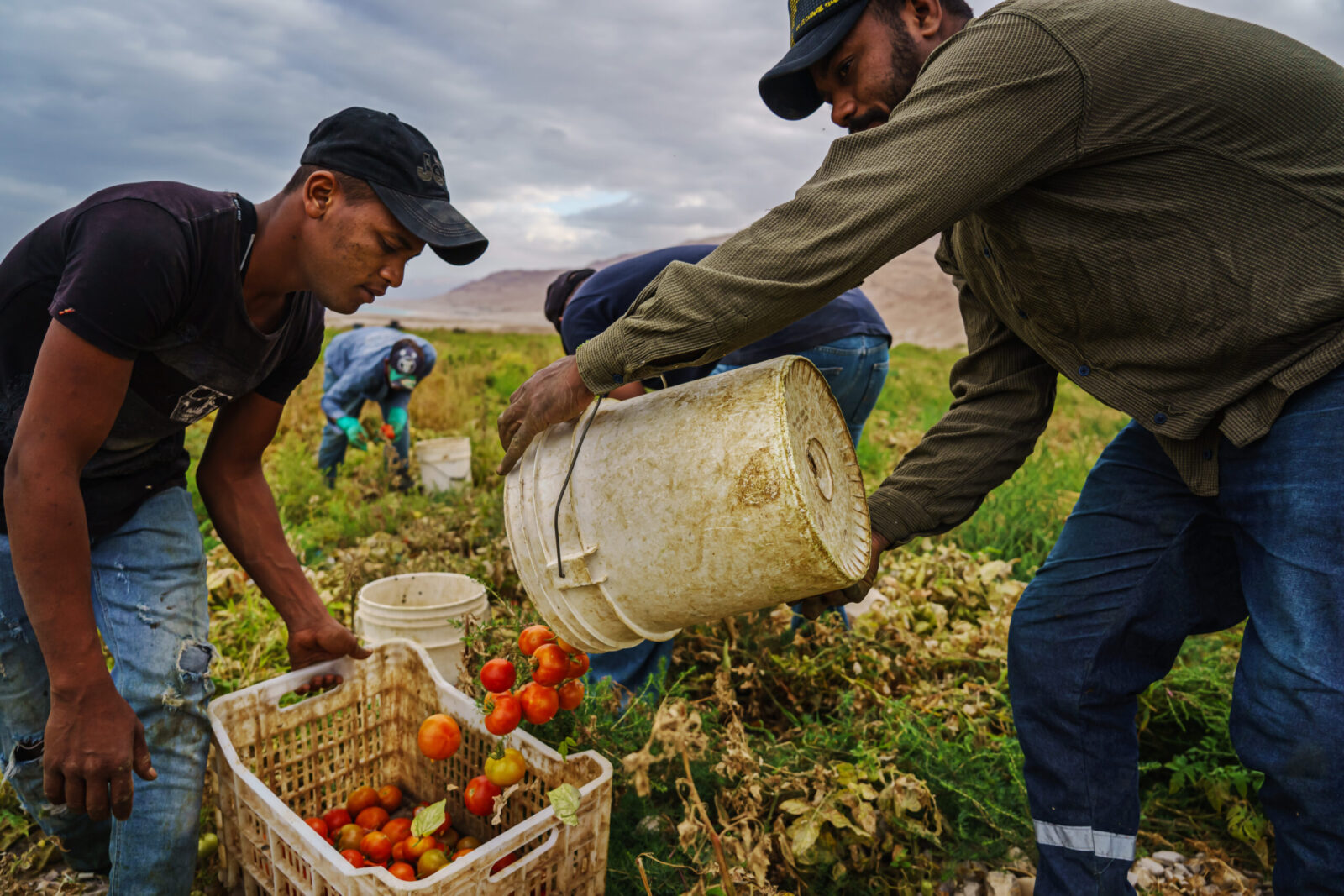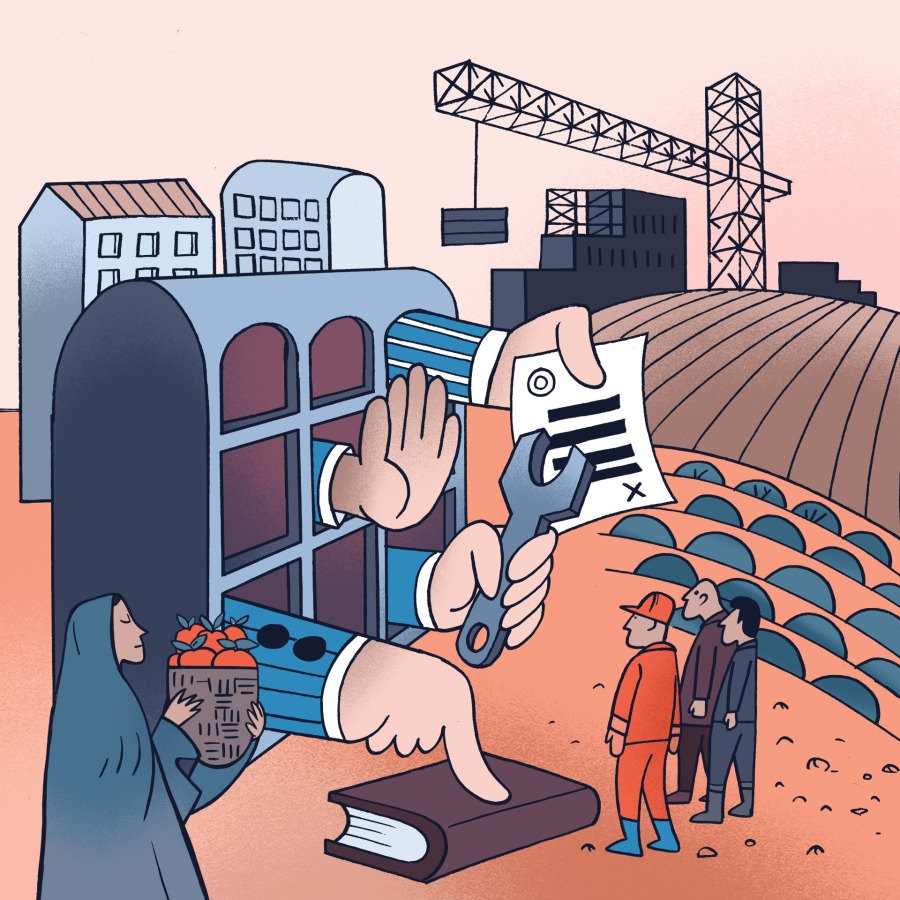Jordan’s Syrian Refugee Response and Discriminatory Development Aid – MERIP
Jordan’s Syrian Refugee Response and Discriminatory Development Aid MERIP


The Jordan Compact
In June 2023, eight farm workers died in a traffic collision in Jordan. The workers were Syrian refugees who were being transported from an agricultural work site in Mafraq on the back of an overcrowded truck.

Workers harvest tomatoes in Ghor Haditha, Jordan, 2021. Marcus Yam/Los Angeles Times via Getty Images
Dangerous commutes for farm workers
Dangerous commutes are a daily reality for farm workers in Jordan, where the lives of migrant laborers from Syria, Egypt, Sudan and elsewhere intersect with those of poor Jordanians. During these commutes, workers are often packed into pickup trucks in groups of twenty or more and driven along rough back roads to avoid police because the trucks are unlicensed, or only licensed for the transport of crops and other goods.
While the conditions are equally unsafe for all precarious workers regardless of their national origin, programs like the agricultural work site are part of a refugee response that has increasingly focused on national origin and access to labor, pitting Syrian refugees against other refugee and migrant worker populations.
The Jordan Compact
In 2016, more than 70 heads of state met at the “Supporting Syria and the Region” conference in London hosted by Britain, Germany, Kuwait, Norway and the United Nations. Together, they developed the “Jordan Response Plan for the Syria Crisis”—an aid funding tool, co-led by the Jordanian government and UN agencies and first designed in 2015 to support refugee “self-reliance.”[1]
The 2016 conference culminated in a new approach to containing migrants in Jordan. The so-called Jordan Compact, which emerged from these negotiations, claimed to be centered on broader structural issues like economic development and the long-term impacts of migration on major host countries, such as Jordan, which, in the 2000’s and 2010’s saw acute episodes of inflation and social tensions following large refugee inflows.
Put simply, the agreement stated that in exchange for monetary aid and improved trade relations with European countries, Jordan would help create 200,000 economic opportunities for Syrian refugees: mostly low-wage jobs in the manufacturing sector. The relaxed terms of trade would apply to 52 product categories produced in factories in 18 designated industrial areas, or “special economic zones” (zones designated for factories that benefit from a special tax status with reduced rates). The European Union would make it easier for these factories to export goods in an aim to improve Amman’s trade imbalance.
In addition to humanitarian agencies, the World Bank and International Monetary Fund also helped implement the Jordan Compact. Indeed, for the first time, and backed by European donors, multilateral development banks including the IMF granted Jordan, a middle-income country, access to concessional financing at no interest, typically only made available to very poor countries. All Jordan had to do in order to receive some $1.9 billion in loans was to meet benchmarks set for the economic, social and educational inclusion of Syrian refugees.
Initially, UN agencies and humanitarian organizations greeted the Jordan Compact with considerable fanfare and support. But criticism quickly mounted over its approach, implementation and exclusivity. Scholars noted the transactional neoliberal nature of the program: Donor support for refugees was made conditional on their employment and containment in Jordan. Within Jordan, refugees were awarded clearer refugee status in exchange for their employment and potential economic gains from the Jordan Compact. In other words, refugees earned protection only in exchange for their economic productivity. Moreover, its emphasis on manufacturing and agricultural labor meant it focused on men largely to the exclusion of women despite the fact that in 2016, 23 percent of Syrian refugee households in Jordan were headed by women.[2]
Excluding Non-Syrian Workers
In an ironic twist, the compact was approved just two months after Jordan enacted a mass deportation of Sudanese refugees. This episode speaks to another major problem with the Jordan Compact: its failure to meaningfully incorporate non-Syrian refugees and other vulnerable groups. Jordan agreed to the compact amid rising unemployment, which jumped from 12.2 percent in 2012 to 17.9 percent in 2023.[3] Over this time, the government has continued to engage in active deportation and regularization campaigns aimed at reducing the use of migrant labor, even as it created more opportunities for Syrians.
From the beginning, the initial Jordan Compact press release only referred to two populations: Syrians and their native Jordanian hosts. Indeed, when other migrant groups are mentioned in the official documents around the compact, it is only to highlight the scope of Jordan’s existing burden, not to lay out actions to address their deprivation. World Bank loans, too, could only be acquired if conditions linked to Syrians were met, incentivizing the government to concentrate its efforts at assistance and inclusion programs strictly for this group.
 merip.org
merip.org

Join us, as fellow seekers of change, on a transformative journey at https://sdgtalks.ai/welcome, where you can become a member and actively contribute to shaping a brighter future.







